J.J. Moon is a fictional character and simply plays on the George Orwell Moon Under Water theme of some of the company’s earliest pubs.
Framed illustrations and text about the area’s ancient history.
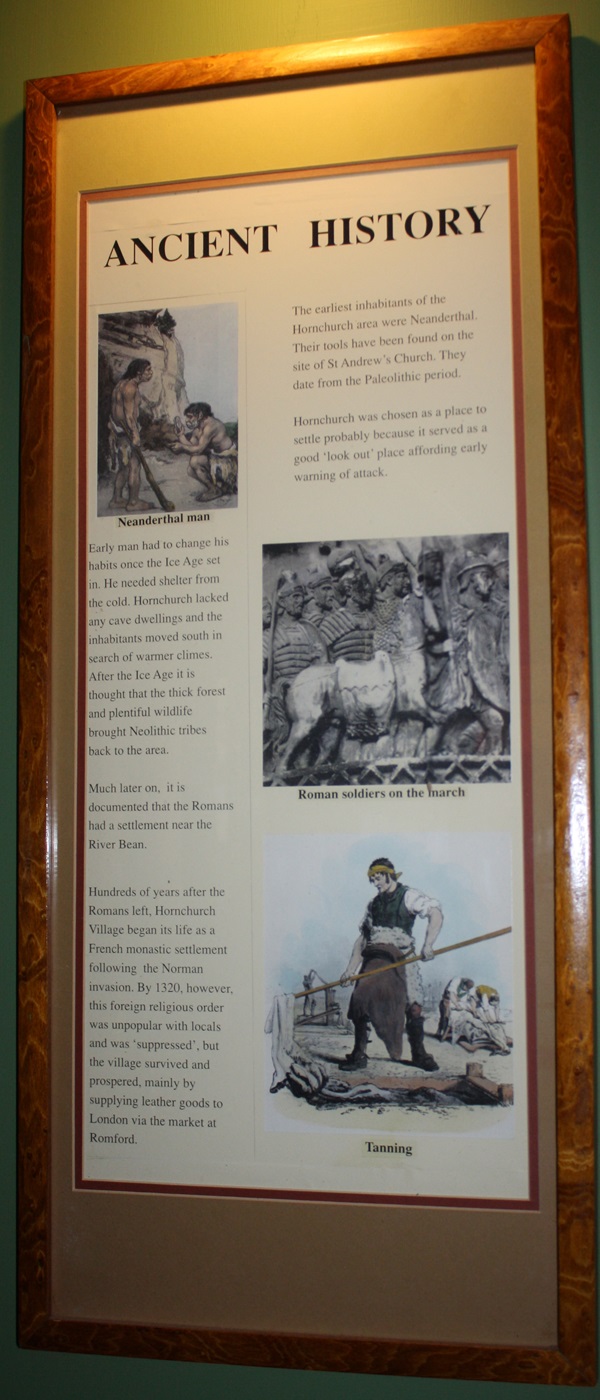
The text reads: The earliest inhabitants of the Hornchurch area were Neanderthal. Their tools have been found on the site of St Andrew’s church. They date from the Palaeolithic period.
Hornchurch was chosen as a place to settle probably because it served as a good ‘look out’ place affording early warning of attack.
Early man had to change his habits once the Ice Age had set in. he needed shelter from the cold. Hornchurch lacked any cave dwellings and the inhabitants moved south in search of warmer climes. After the Ice Age it is thought that the thick forest and plentiful wildlife brought Neolithic tribes back to the area.
Much later on, it is documented that the Romans had a settlement near the River Bean.
Hundreds of years after the Romans left, Hornchurch Village began its life as a French monastic settlement following the Norman invasion. By 1320, however, this foreign religious order was unpopular with locals and was ‘suppressed’, but the village survived and prospered, mainly by supplying leather goods to London via the market at Romford.
Framed illustrations and text about Edward the Confessor.
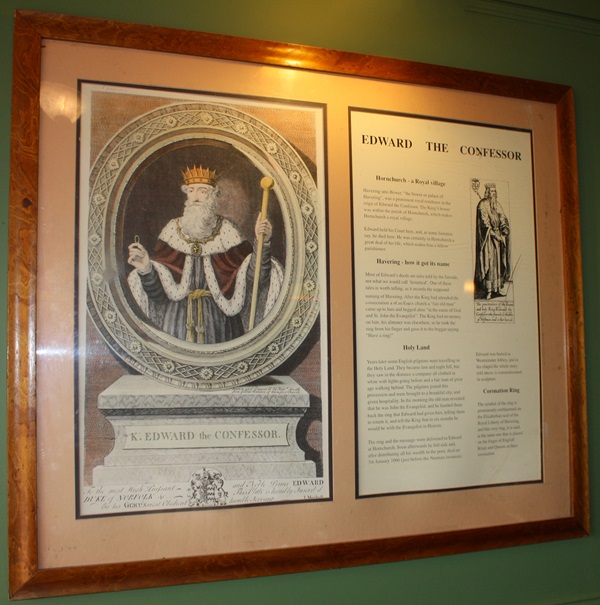
The text reads: Havering-atte-Bower, “the bower or palace of Havering”, was a prominent royal residence in the reign of Edward the Confessor. The King’s bower was within the parish of Hornchurch, which makes Hornchurch a royal village.
Edward held his Court here, and, as some histories say, he died here. He was certainly in Hornchurch a great deal of his life, which makes him a fellow parishioner.
Most of Edward’s deeds are tales told by the fireside, not what we would call ‘historical’. One of these tales is worth telling, as it records the supposed naming of havering. After the King had attended the consecration of an Essex church a “fair old man” came up to him and begged alms “in the name of God and St. John the Evangelist”. The King had no money on him, his almoner was elsewhere, so he took the ring from his finger and gave it to the beggar saying “Have a ring!”
Years later some English pilgrims were travelling in the Holy Land. They became lost and night fell, but they saw in the distance a company all clothed in white with lights going before and a fair man of great age walking behind. The pilgrims joined this procession and were brought to a beautiful city, and given hospitality. In the morning the old man revealed that he was john the Evangelist, and he handed them back the ring that Edward had given him, telling them to return it, and tell the King that in six months he would be with the Evangelist in Heaven.
The ring and the message were delivered to Edward at Hornchurch. Soon afterwards he fell sick and, after distributing all his wealth to the poor, died on 5th January 1066 (just before the Norman invasion).
Edward was buried in Westminster Abbey, and in his chapel the whole story told above is commemorated in sculpture.
The symbol of the ring is prominently emblazoned on the Elizabethan seal of the Royal liberty of havering, and this very ring, it is said, is the same one that is placed on the finger of English Kings and Queens at their coronation.
Framed illustrations and text about Queen Elizabeth I.
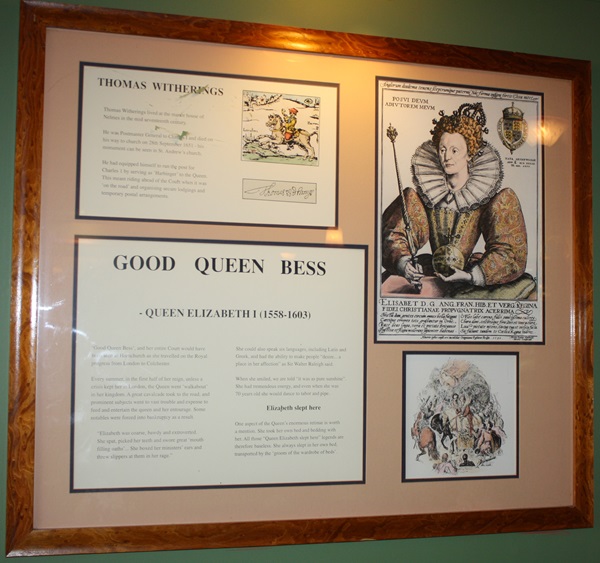
The text reads: Thomas Witherings lived at the manor house of Nelmes in the mid seventeenth century.
He was Postmaster General to Charles I and died on his way to church on 28th September 1651 – his monument can be seen in St. Andrew’s church.
He had equipped himself to run the post for Charles I by serving as ‘Harbinger’ to the Queen. This meant riding ahead of the Court when it was ‘on the road’ and organising secure lodgings and temporary postal arrangements.
‘Good Queen Bess’, and her entire Court would have been seen at Hornchurch as she travelled on the Royal progress from London to Colchester.
Every summer, in the first half of her reign, unless a crisis kept her in London, the Queen went ‘walkabout’ in her kingdom. A great cavalcade took to the road, and prominent subjects went to vast trouble and expense to feed and entertain the queen and her entourage. Some notables were forced into bankruptcy as a result.
“Elizabeth was coarse, bawdy and extroverted. She spat, picked her teeth and swore great ‘mouth filling oaths’… She boxed her ministers’ ears and threw slippers at them in her rage.”
She could also speak six languages, including Latin and Greek, and had the ability to make people “desire… a place in her affection” as Sir Walter Raleigh said.
When she smiled, we are told “it was as pure sunshine”. She had tremendous energy, and even when she was 70 years old she would dance to tabor and pipe.
One aspect of the Queen’s enormous retinue is worth a mention. She took her own bed and bedding with her. All those “Queen Elizabeth slept here” legends are therefore baseless. She always slept in her own bed, transported by the ‘groom of the wardrobe of beds’.
A framed copy of a Wills’s Cigarettes card, entitled Earth-Shine, from 1928.
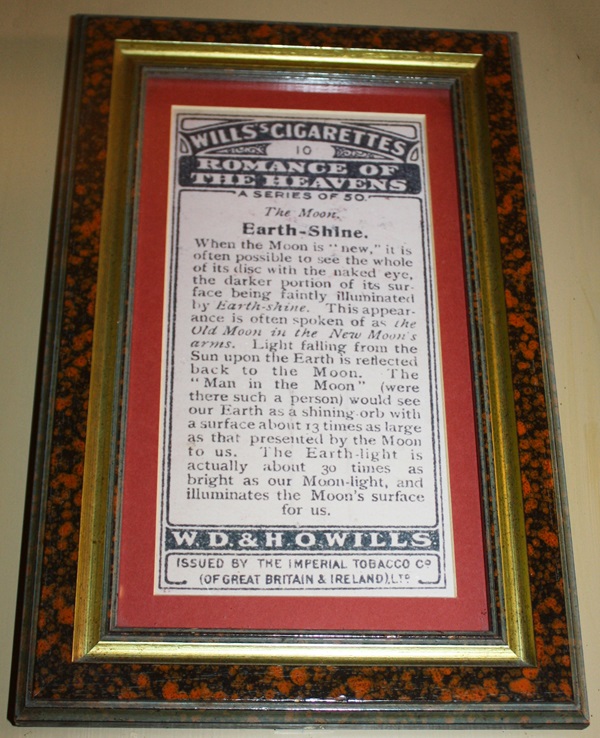
The text reads: When the Moon is “new,” it is often possible to see the whole of its disc with the naked eye, the darker portion of its surface being faintly illuminated by Earth-shine. This appearance is often spoken of as the Old Moon in the New Moon’s arms. Light falling from the Sun upon the Earth is reflected back to the Moon. The “Man in the Moon” (were there such a person) would see our Earth as a shining orb with a surface about 13 times as large as that presented by the Moon to us. The Earth-light is actually about 30 times as bright as our moon-light, and illuminates the Moon’s surface for us.
A framed copy of a Wills’s Cigarettes card, entitled Lunar Corona, from 1928.
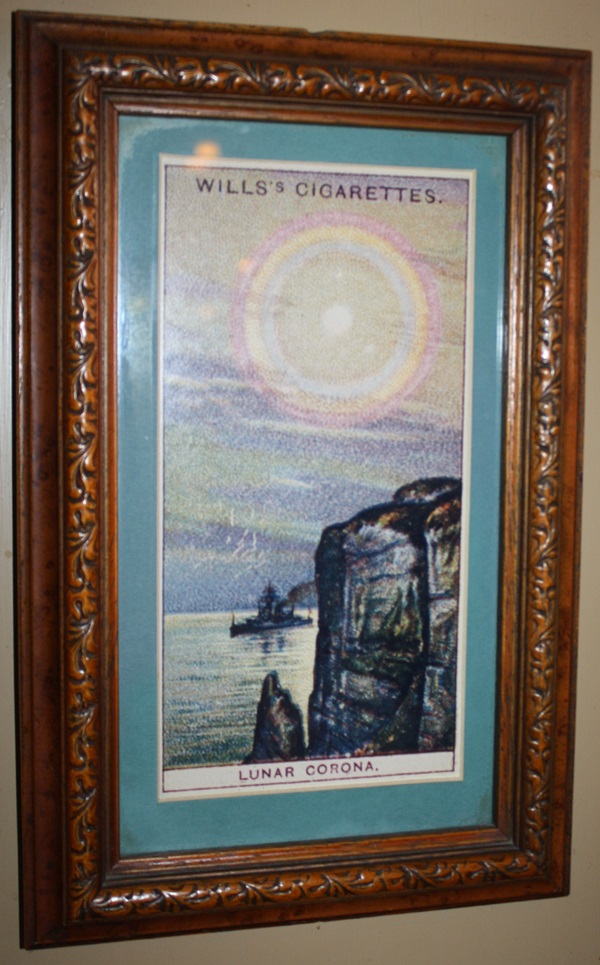
Will’s Cigarettes were famous for their packaging.
A framed copy of a Wills’s Cigarettes card, entitled Mock Moons, from 1928.
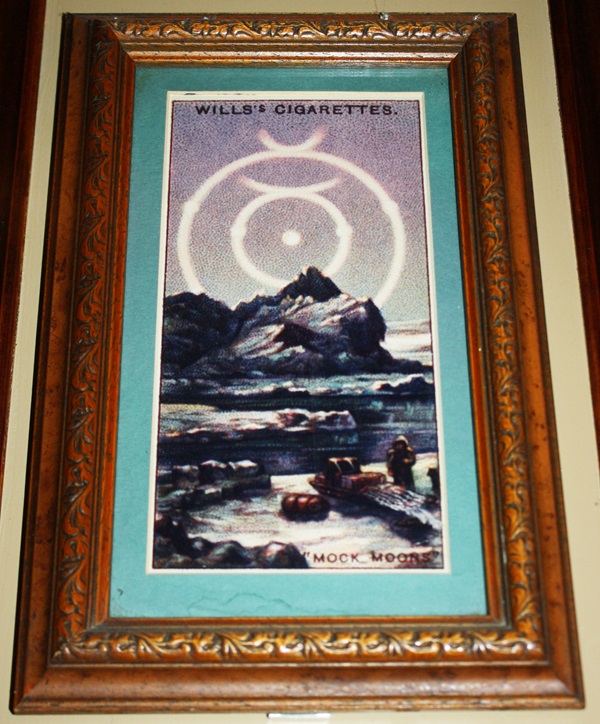
A framed copy of a Wills’s Cigarettes card, entitled Earth as Seen from the Moon, from 1928.
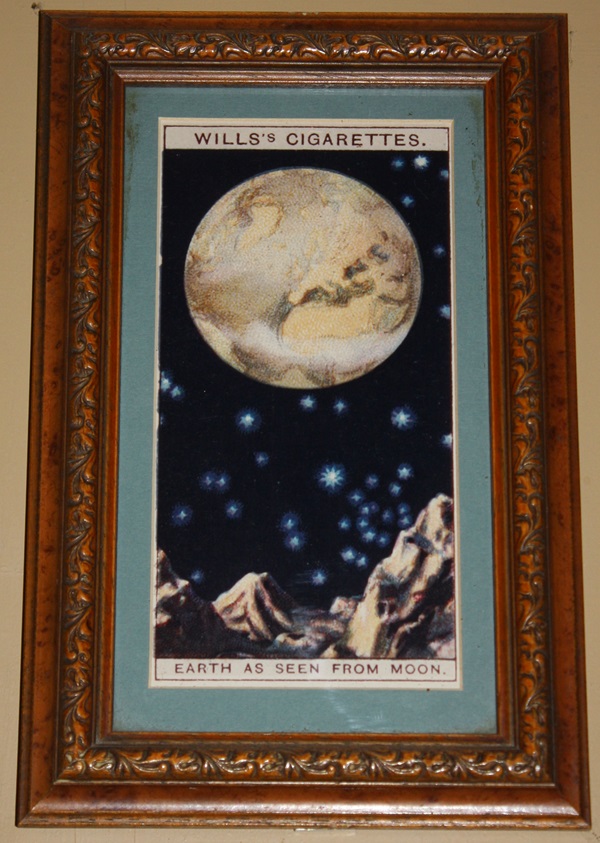
A framed copy of a Wills’s Cigarettes card, entitled Inner Planets, from 1928.
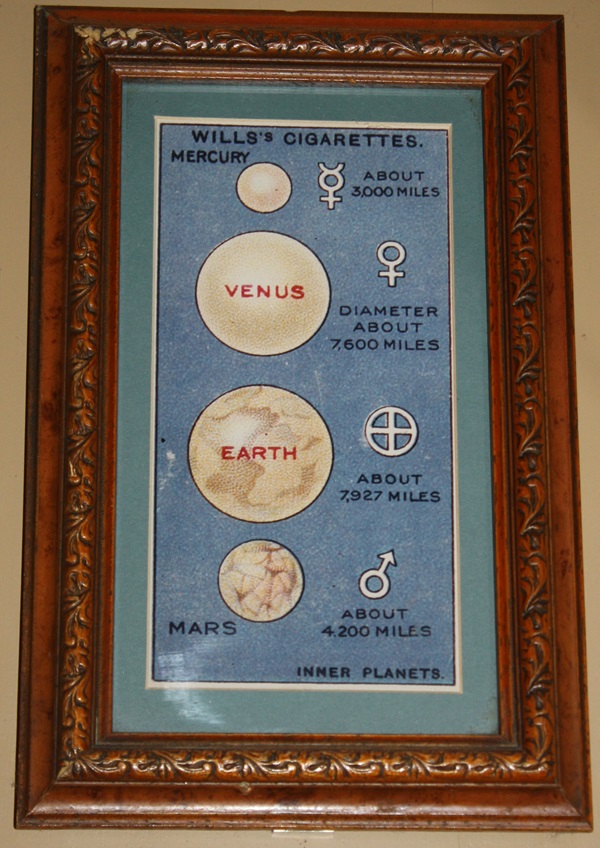
A framed illustration entitled I want! I want!, by W Blake, May 1703.
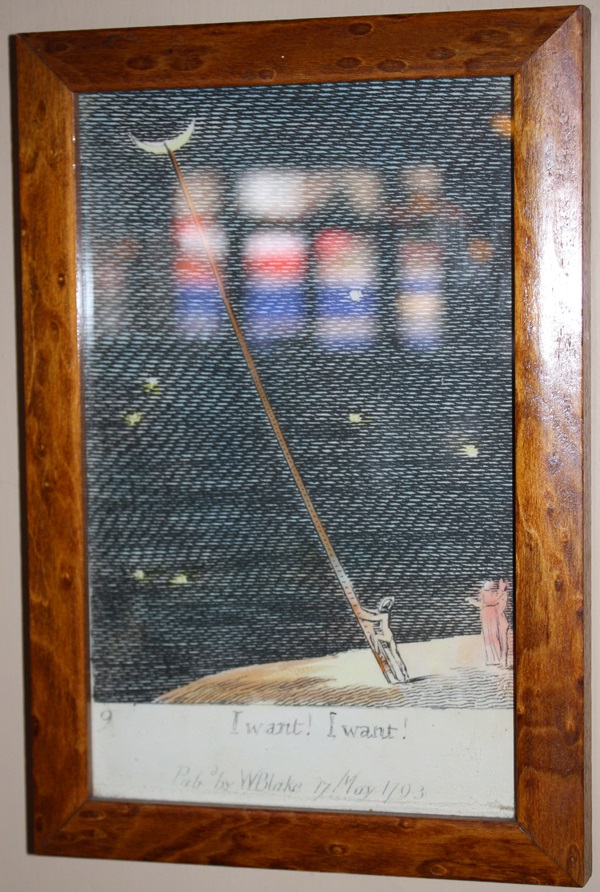
A framed illustration of the moon, stars and sun.
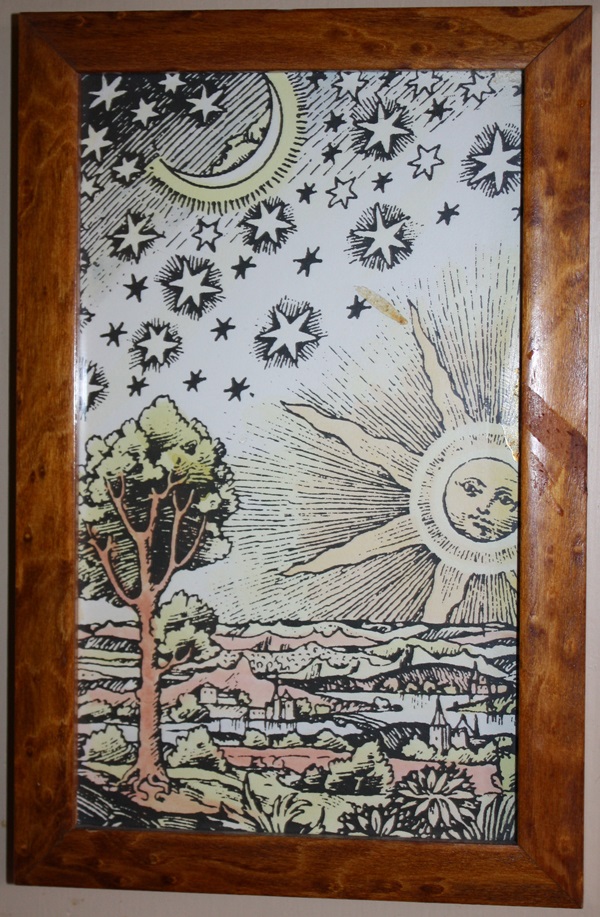
A framed illustration of The Cricketers Inn, Hornchurch, by Jeff Jones.
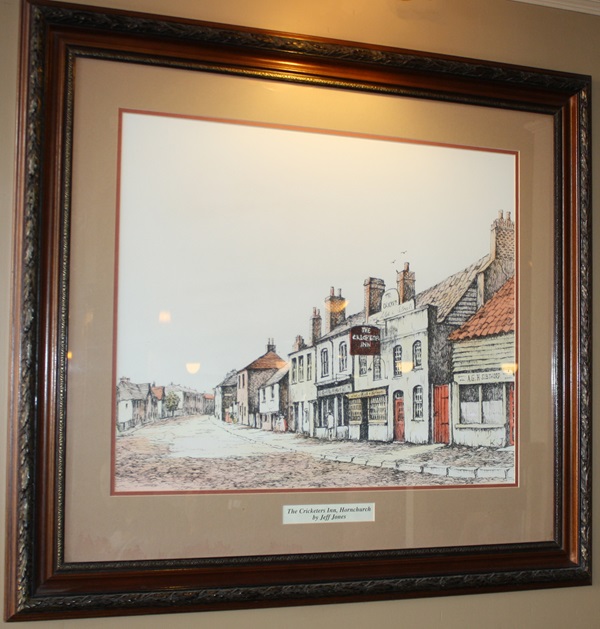
A framed illustration of the Smiling Mill and Dell, Hornchurch, by Jeff Jones.
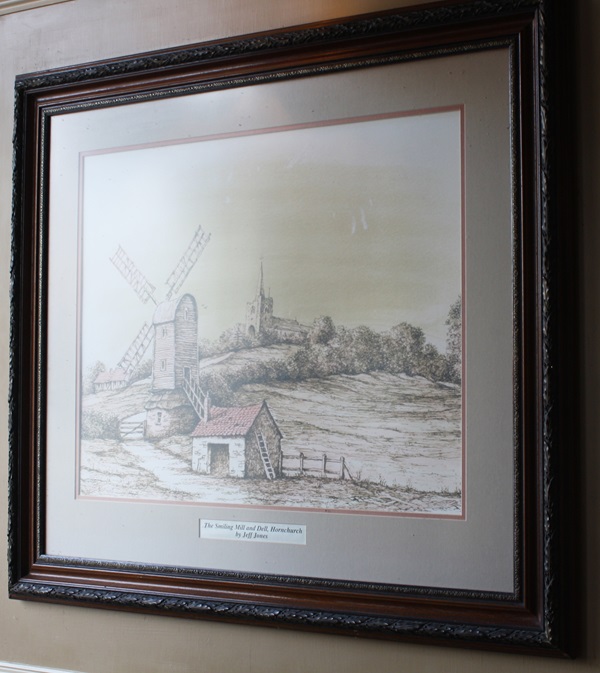
A framed illustration of Wykeham Cottages, Hornchurch, by Jeff Jones.
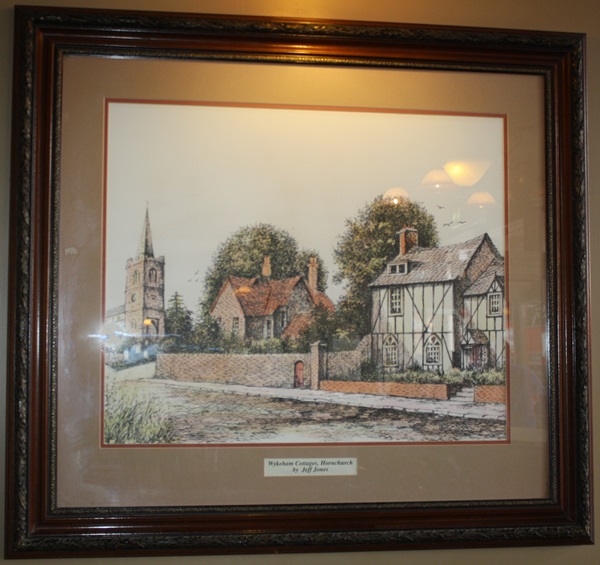
Framed photographs of Hornchurch in the past.
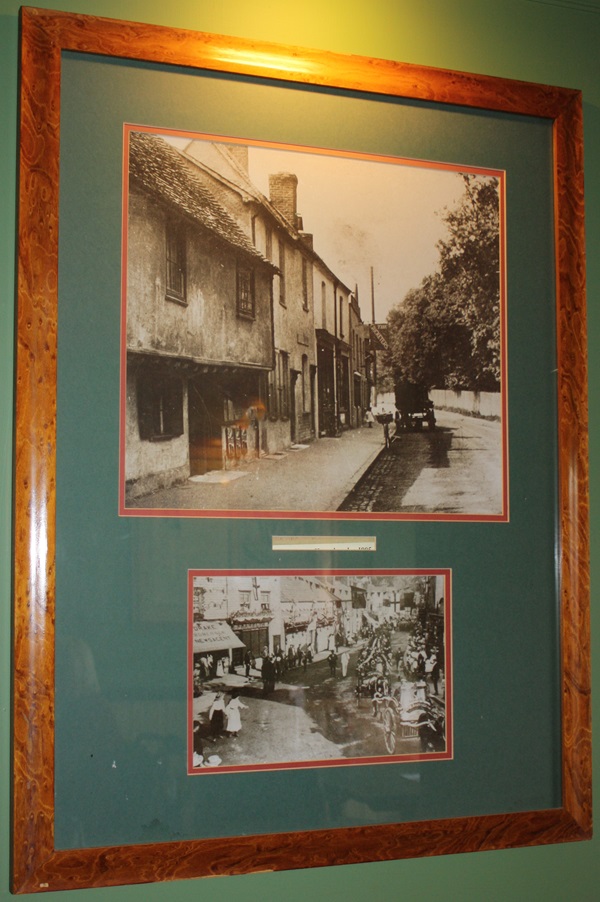
An external view of the pub – main entrance.
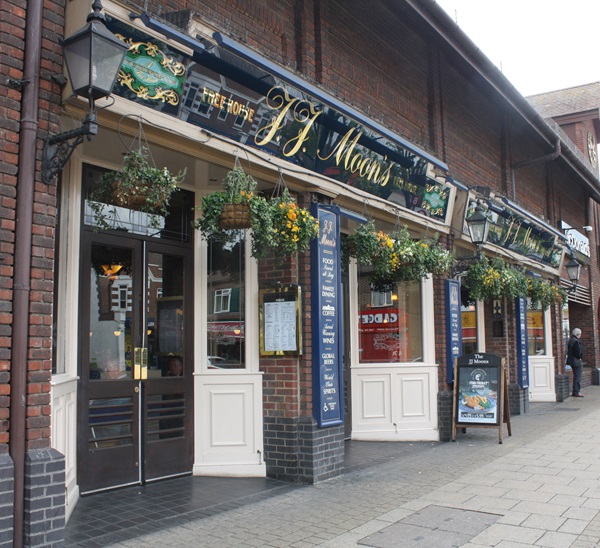
If you have information on the history of this pub, then we’d like you to share it with us. Please e-mail all information to: pubhistories@jdwetherspoon.co.uk